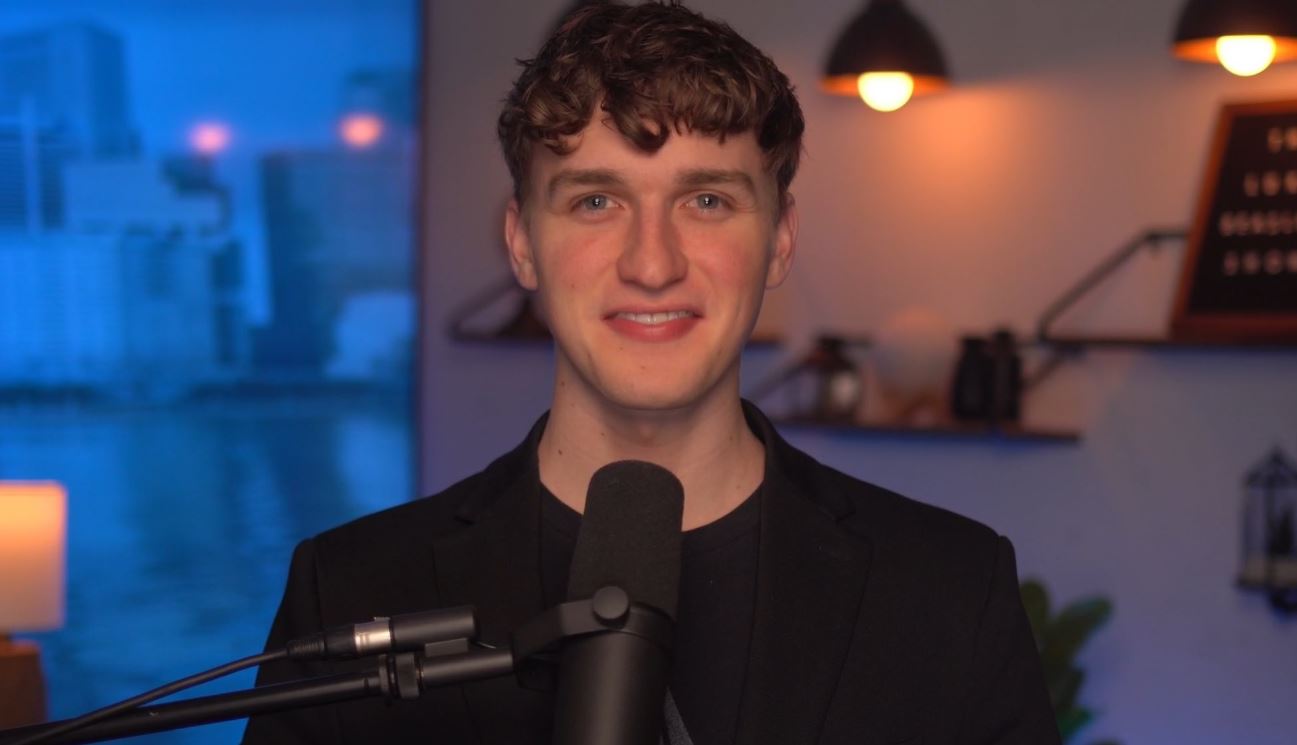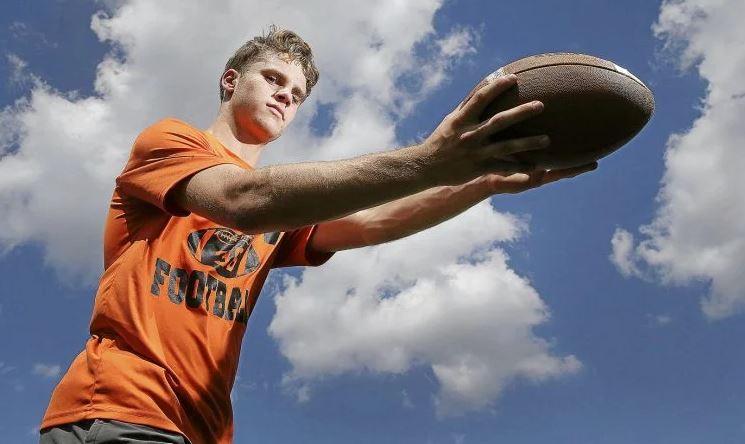Unveiling Luke Beasley Age and Its Impact on His Basketball Career An In-Depth Analysis
Luke Beasley is a professional basketball player currently making waves in the National Basketball League (NBL) as a key member of the Melbourne United. Luke Beasley age ,born on July 27, 1995, Beasley has rapidly ascended to prominence within the league, known for his remarkable athleticism, high-flying dunks, and solid performances on the court. As a member of the Australian Boomers, Australia’s national basketball team, Beasley’s talent extends beyond domestic competition, showcasing his skills on the international stage. His journey from a budding basketball enthusiast to a professional athlete is a testament to his dedication, hard work, and natural ability.
In the world of sports, particularly in basketball, an athlete’s age plays a critical role in shaping their career trajectory. Age influences various aspects of an athlete’s performance, from physical capabilities to cognitive skills and overall career longevity. For a young player like Beasley, age presents both opportunities and challenges. At 27, Beasley enjoys the physical advantages of youth, such as strength, speed, and endurance, which allow him to compete at a high level and recover quickly from intense physical exertion. His age also positions him in a phase where he can rapidly learn and improve his skills, adapting to the dynamic demands of professional basketball.
However, the importance of age in basketball is a double-edged sword. As players age, they must contend with the inevitable physical decline that comes with getting older. Maintaining peak physical condition requires more effort, and the risk of injuries increases. Additionally, the need for greater experience and refined decision-making becomes crucial as players mature. For Beasley, balancing the benefits of his current age with the preparations for future stages of his career is essential for sustained success. Understanding how age impacts an athlete’s career provides valuable insights into their development, performance, and potential longevity in the sport.
1. Background Information
1.1. Early Life and Background
Luke Beasley was born on July 27, 1995, marking the beginning of a journey that would see him rise to prominence in the world of professional basketball. His birthplace is significant as it situates him within the rich basketball culture of Australia, a country known for producing talented athletes who excel both domestically and internationally. Growing up, Beasley was immersed in an environment that fostered his athletic talents from a young age.

Beasley’s early life was characterized by an innate passion for sports. As a child, he was drawn to various physical activities, but basketball stood out as his primary interest. This early introduction to the game allowed him to develop fundamental skills and a deep love for basketball. He spent countless hours playing in local courts and school gyms, where he honed his dribbling, shooting, and defensive abilities. His dedication and enthusiasm for the sport were evident, even at a young age, signaling the potential for a future in professional basketball.
1.2. Career Beginnings
Luke Beasley’s journey from a young basketball enthusiast to a professional athlete began in earnest during his formative years. His initial steps in basketball were marked by participation in youth leagues and school teams. These early experiences were crucial in shaping his understanding of the game and building the foundation for his future success. His natural talent did not go unnoticed, and he quickly became a standout player among his peers.
As Beasley progressed through the youth leagues, his skill set expanded, and his understanding of the game deepened. Coaches and mentors played a significant role in his development, providing guidance and helping him refine his techniques. These formative years were not just about learning the basics; they were about instilling a sense of discipline, teamwork, and a competitive spirit. Beasley’s commitment to improvement and his ability to absorb coaching instructions set him apart as a promising young talent.
The transition from youth leagues to professional basketball is a critical phase in any athlete’s career, and for Beasley, this transition was marked by both challenges and opportunities. His performances in youth competitions caught the attention of scouts and coaches at higher levels, paving the way for his entry into more competitive leagues. The leap to professional basketball required him to adapt to faster-paced games, more physically demanding matches, and higher levels of strategic play.
Beasley’s first significant break came when he was offered the opportunity to join a professional team. This transition was a testament to his hard work and the skills he had developed over the years. Entering the professional arena, Beasley faced the reality of competing against seasoned athletes, which demanded even greater dedication and effort. He embraced this challenge, continuing to refine his game and proving himself on the court.
Throughout his early career, Beasley’s growth was marked by continuous learning and adaptation. Each game, practice session, and interaction with experienced players contributed to his development as a well-rounded athlete. His journey from local courts to the professional stage is a story of perseverance, talent, and an unwavering passion for basketball. These early experiences laid the groundwork for his future successes and established him as a rising star in the National Basketball League (NBL) and beyond.
2. Luke Beasley’s Current Age and Its Significance
2.1. Current Age
As of 2023, Luke Beasley is 27 years old, an age that places him in a unique position within the world of professional basketball. At this stage in his career, Beasley is in what many consider the prime of an athlete’s life. This period is often marked by a combination of peak physical condition and accumulated experience, allowing players to perform at exceptionally high levels.

Being 27 years old, Beasley benefits from having several years of professional play under his belt. This experience translates into a deeper understanding of the game, better decision-making on the court, and a heightened ability to read opponents and anticipate plays. These factors contribute to his current status as a key player for Melbourne United in the National Basketball League (NBL) and a valued member of the Australian Boomers, the national team.
2.2. Athletic Advantages
At 27, Luke Beasley enjoys several athletic advantages that are crucial for his success on the basketball court. These advantages stem from a combination of his physical peak and the extensive training he has undergone over the years.
Strength
One of the primary benefits of being 27 is the peak physical strength that Beasley possesses. This strength is essential for various aspects of basketball, including battling for rebounds, defending against opponents, and executing powerful moves in the paint. Beasley’s ability to use his body effectively gives him an edge in one-on-one situations, allowing him to overpower defenders and create scoring opportunities for himself and his teammates.
Speed
Speed is another critical attribute that Beasley capitalizes on. At 27, his quickness and agility are at their best, enabling him to navigate the court with ease, both offensively and defensively. This speed is particularly advantageous in fast-break scenarios where Beasley can outrun opponents to either score or set up plays. His quick reflexes also help in defensive maneuvers, allowing him to stay in front of faster opponents and disrupt their rhythm.
Endurance
Endurance is a vital component of Beasley’s athletic profile. At this stage of his career, he has developed the stamina required to maintain a high level of play throughout the entirety of a game. This endurance allows him to perform consistently during long stretches on the court, contributing to his team’s efforts without experiencing significant drops in performance. His ability to stay active and effective late into games is a testament to his physical conditioning and the rigorous training he adheres to.
Comparison with Older and Younger Players
When comparing Beasley to both older and younger players, his age offers a balanced mix of youthful vigor and experienced poise. Younger players may possess raw athleticism and a higher potential for rapid improvement, but they often lack the refined skills and game sense that come with experience. Conversely, older players typically have extensive knowledge and strategic acumen but might struggle with the physical demands of the sport due to natural age-related decline.
Beasley’s age situates him in a sweet spot where he can leverage his physical prowess while also drawing on his years of professional experience. This combination makes him a formidable opponent on the court and a reliable asset to his team. As he continues to play, the balance between maintaining his physical condition and enhancing his basketball IQ will be crucial for extending his career and achieving further success.
In summary, Luke Beasley’s current age of 27 is significant because it represents a period where he can maximize his physical and mental capabilities, making him a standout player in professional basketball. His strength, speed, and endurance, coupled with his growing experience, position him advantageously against both older and younger competitors, ensuring his continued impact on the game.
3. Physical Advantages of Luke Beasley’s Age
3.1. Strength
At the age of 27, Luke Beasley’s physical strength is at its peak, significantly contributing to his overall performance on the basketball court. Strength is a crucial asset in basketball, impacting both offensive and defensive plays. Beasley’s robust physicality allows him to dominate in the post, secure rebounds, and withstand the physicality of opponents. His ability to hold his ground against bigger players in the paint and muscle his way to the basket is a testament to his strength.

In games, Beasley’s strength is evident during his powerful drives to the basket. He can absorb contact from defenders and still complete plays, often resulting in and-one opportunities. For example, during a critical game against the Sydney Kings, Beasley showcased his strength by driving through two defenders to score a crucial basket, drawing a foul in the process. His ability to maintain control and composure under physical pressure underscores the importance of his strength in contributing to his team’s success.
3.2. Speed
Speed is another key advantage that Beasley enjoys at 27. His quickness allows him to excel in various facets of the game, from fast breaks to defensive maneuvers. Beasley’s speed enhances his ability to create separation from defenders, making him a formidable offensive threat. His agility and acceleration enable him to exploit gaps in the defense, leading to high-percentage scoring opportunities.
A notable instance where Beasley’s speed made a significant difference was during a match against the Perth Wildcats. In a tightly contested game, Beasley’s quick transition from defense to offense caught the Wildcats off guard, leading to multiple fast-break points. His ability to sprint down the court and finish with authority at the rim helped Melbourne United secure a crucial victory. Additionally, Beasley’s lateral quickness allows him to stay in front of agile opponents on defense, disrupting their offensive flow and forcing turnovers.
3.3. Endurance
Endurance is essential for maintaining a high level of performance throughout the duration of games and entire seasons. At 27, Beasley’s endurance is at a level where he can sustain his energy and effectiveness even during the most grueling stretches of play. This stamina is crucial in basketball, a sport characterized by its fast pace and physical demands.
Beasley’s endurance is particularly evident in high-pressure situations, where maintaining focus and physical capability is paramount. For instance, in a playoff series against the Brisbane Bullets, Beasley played nearly the entire game, demonstrating his exceptional endurance. Despite the extended minutes and the intensity of playoff basketball, Beasley remained effective, contributing significantly on both ends of the court. His ability to play at a high level without succumbing to fatigue was instrumental in his team’s success.
Moreover, Beasley’s rigorous conditioning regime plays a significant role in his ability to endure long periods of play. His dedication to maintaining peak physical condition allows him to recover quickly and perform consistently, even as the season progresses and the cumulative toll on his body increases. This endurance not only benefits his individual performance but also serves as an inspiration to his teammates, exemplifying the level of commitment required to excel at the highest levels of professional basketball.
In summary, the physical advantages of Luke Beasley’s age—strength, speed, and endurance—are pivotal to his success on the basketball court. His strength allows him to dominate physically, his speed makes him a dynamic player both offensively and defensively, and his endurance enables him to maintain peak performance throughout games and seasons. These attributes, combined with his skill set and experience, make Beasley a standout player in the National Basketball League.
4. Learning and Improvement
4.1. Cognitive and Physical Learning
At 27, Luke Beasley is at a prime age where both cognitive and physical learning abilities are at their peak. This phase in an athlete’s career is marked by a unique combination of mental maturity and physical prowess, enabling rapid skill acquisition and improvement.
Cognitively, Beasley’s age allows him to better understand complex strategies, read the game more effectively, and make quicker decisions on the court. The mental aspects of basketball, such as spatial awareness, anticipation, and tactical understanding, are honed through experience and maturity, both of which Beasley possesses in abundance. Physically, his body is still capable of adapting and improving, which means he can incorporate new techniques and refine his existing skills efficiently.

Examples of Beasley’s rapid improvement and skill acquisition can be seen in his development as a shooter. Initially known primarily for his athleticism and driving ability, Beasley has significantly improved his three-point shooting over the past few seasons. This enhancement not only makes him a more versatile scorer but also a more difficult player to defend against. His dedication to mastering this aspect of his game highlights how his age has positively influenced his ability to learn and adapt.
4.2. Coachability
Coachability is a critical trait for any athlete, and it is particularly significant for someone in the prime of their career like Luke Beasley. Being coachable means being open to feedback, willing to learn from mistakes, and eager to implement new strategies or techniques suggested by coaches.
At 27, Beasley is at an ideal age to balance his own insights and experiences with the guidance provided by his coaches. He has enough professional experience to understand the game deeply, yet he is still young enough to be flexible and adaptive in his learning process. This combination makes him highly receptive to coaching, allowing him to continually evolve as a player.
Beasley’s relationship with his coaches is a testament to his coachability. He is known for his attentiveness during practice sessions, his willingness to ask questions, and his proactive approach to addressing areas of improvement. This respectful and collaborative relationship with his coaching staff has been a cornerstone of his development. His age facilitates this dynamic as he possesses the maturity to value experienced advice and the energy to act on it.
4.3. Work Ethic and Natural Ability
Luke Beasley’s success on the court is a product of both his natural talent and his unwavering work ethic. Natural ability provides the foundation for his skills, such as his exceptional hand-eye coordination, agility, and instinctive understanding of the game. However, it is his commitment to constant improvement that truly sets him apart.
Beasley’s work ethic is evident in his rigorous training routines and his dedication to refining every aspect of his game. He spends countless hours in the gym, working on his shooting, ball-handling, and conditioning. This relentless pursuit of perfection is a key factor in his ongoing development and success.
His natural talent complements his work ethic by giving him the tools to excel in various facets of the game. For instance, his innate court vision allows him to make smart passes and anticipate defensive schemes, while his physical gifts enable him to execute plays that other players might find challenging. The synergy between his natural abilities and his hardworking approach makes him a formidable player.
In conclusion, Luke Beasley’s age plays a significant role in his learning and improvement as a basketball player. His cognitive and physical learning capacities allow for rapid skill acquisition, his coachability fosters a positive and productive relationship with his coaches, and his natural talent, combined with a strong work ethic, propels him to continuously elevate his game. These factors together ensure that Beasley remains a dynamic and evolving presence on the basketball court.
5. Challenges Associated with Age
5.1. Physical Decline
As athletes age, they inevitably face physical changes that require increased maintenance and care. For Luke Beasley, who is currently 27, the signs of physical decline may not be imminent, but they are a reality that all professional athletes must eventually contend with. The aging process can lead to reduced muscle mass, slower recovery times, and a higher risk of injuries. These changes necessitate a more rigorous approach to physical health management to maintain peak performance levels.

To combat these challenges, Beasley must implement several strategies. Regular strength training and conditioning exercises are crucial to preserving muscle mass and overall fitness. Flexibility exercises, such as yoga or dynamic stretching, can help maintain joint health and reduce the risk of strains. Additionally, Beasley should prioritize rest and recovery, incorporating techniques like ice baths, massages, and sufficient sleep to aid in muscle repair and recovery.
5.2. Experience vs. Youth
Balancing the advantages of youth with the need for experience is another challenge that comes with age. Younger players typically bring raw athleticism, energy, and a rapid ability to recover from physical exertion. In contrast, experienced players, like Beasley, offer a deeper understanding of the game, strategic thinking, and more refined skills.
At 27, Beasley is at a crossroads where he benefits from both his youthful physicality and his growing experience. This combination allows him to make smarter decisions on the court, using his experience to anticipate opponents’ moves and react accordingly. His age enables him to leverage his physical advantages while also drawing on his years of play to make more strategic choices, such as when to push the pace or when to conserve energy.
However, as he continues to age, the balance will shift, and the emphasis will increasingly be on leveraging his experience. This transition will require Beasley to focus more on the mental aspects of the game, refining his basketball IQ and leadership skills to compensate for any physical declines. His ability to adapt to this shift will be crucial for maintaining his effectiveness on the court.
5.3. Injury Prevention
Injury prevention is paramount for any athlete, and as Beasley ages, it becomes even more critical. Preventing injuries requires a comprehensive approach that includes proper warm-up routines, a balanced diet, and the use of appropriate equipment.
Warm-up routines are essential to prepare the body for the physical demands of basketball. Beasley should incorporate dynamic stretching and light cardio exercises to increase blood flow to the muscles and improve flexibility. This preparation helps reduce the risk of strains and sprains during play.
Diet also plays a significant role in injury prevention. A well-balanced diet rich in proteins, healthy fats, vitamins, and minerals supports muscle health and recovery. Hydration is equally important, as it aids in maintaining muscle function and reducing cramping.
Using the right equipment, such as well-fitted shoes with proper ankle support, can prevent common basketball injuries like ankle sprains. Additionally, Beasley might benefit from wearing protective gear like knee and elbow pads, especially during intense games or practices.
Beasley’s specific measures to stay healthy likely include regular consultations with a team of health professionals, including physiotherapists, nutritionists, and sports psychologists. These experts can provide personalized advice and treatment plans to address any issues promptly and prevent them from escalating into more serious problems.
In summary, the challenges associated with age for Luke Beasley include managing physical decline, balancing the benefits of youth with the need for experience, and preventing injuries. By adopting comprehensive strategies for physical maintenance, leveraging his growing experience, and prioritizing injury prevention, Beasley can continue to perform at a high level and extend his basketball career.
6. Impact of Experience on Performance
6.1. Learning from More Experienced Players
Gaining experience is a vital aspect of any athlete’s career, significantly enhancing decision-making and on-court performance. For Luke Beasley, learning from more experienced players has been instrumental in his development. Veterans in the sport bring a wealth of knowledge, strategies, and nuanced understanding of the game, which younger players can absorb and implement.
Experienced players serve as mentors, offering insights that go beyond basic skills and drills. They share strategies on positioning, reading opponents, and anticipating plays. Beasley has likely benefited from playing alongside seasoned teammates who have helped him refine his game. For instance, learning how to better manage game tempo and when to take calculated risks are lessons often imparted by experienced players.

An example of Beasley’s growth through learning from veterans can be seen in his improved court vision and decision-making. Early in his career, he might have relied more on his physical attributes, but under the guidance of experienced teammates and coaches, he has learned to anticipate defensive setups and make smarter passes. This strategic approach has enhanced his overall effectiveness on the court, making him a more well-rounded player.
6.2. Mental Development
Experience significantly impacts an athlete’s mental development, particularly in handling pressure and staying motivated. As players gain more experience, they encounter various high-stakes situations that test their mental fortitude. For Beasley, navigating through these experiences has likely built his resilience and composure.
Handling pressure is a crucial skill in professional sports. Beasley’s experience in critical game situations, such as playoff matches or close contests, has helped him develop a calm demeanor under pressure. He has learned to focus on executing plays and making sound decisions rather than being overwhelmed by the moment. This mental toughness is a result of repeatedly facing and overcoming challenging scenarios.
Staying motivated throughout a long and demanding season also requires strong mental discipline. Experience teaches players like Beasley the importance of setting goals, maintaining a positive mindset, and finding motivation even during slumps or injuries. His journey through various phases of his career, from early struggles to significant achievements, has likely provided valuable lessons in perseverance and self-belief.
Mental challenges are a part of every athlete’s career. Beasley’s growth can be traced through his ability to bounce back from setbacks, whether they are poor performances, injuries, or team losses. His mental development is also evident in his leadership qualities. As he gains experience, Beasley’s role on the team may evolve from just a key player to a leader who inspires and motivates his teammates. This transition requires mental maturity and the ability to handle the pressures of leadership, both on and off the court.
In summary, the impact of experience on Luke Beasley’s performance is profound. Learning from more experienced players has refined his decision-making and on-court strategies, while his mental development has enhanced his ability to handle pressure and stay motivated. These aspects of experience not only improve his personal performance but also contribute to his role as a leader and mentor to younger teammates, thereby extending his influence and effectiveness within the team.
7. Decision-Making Skills
7.1. Court Vision and Basketball IQ
Court vision and basketball IQ are crucial components of Luke Beasley’s game, significantly influencing his decision-making and overall performance. Court vision refers to a player’s ability to see and interpret the entire court, understanding the positions and movements of all players to make the best play. Basketball IQ, on the other hand, is a player’s innate understanding of the game, encompassing strategic thinking, anticipation, and adaptability.
Beasley’s court vision allows him to create scoring opportunities not just for himself but for his teammates as well. His ability to read defenses and anticipate their movements enables him to make precise passes that set up easy baskets. This skill is particularly valuable in high-pressure situations where quick thinking and accurate execution are necessary. For instance, during a close game against the Perth Wildcats, Beasley’s exceptional court vision allowed him to spot a teammate cutting to the basket, delivering a perfectly timed pass that led to a crucial score in the final seconds. This play not only demonstrated his vision but also his calmness under pressure.

Basketball IQ complements Beasley’s court vision, allowing him to make smart decisions that contribute to his team’s success. His understanding of the game enables him to exploit mismatches, adjust his play according to the flow of the game, and make strategic choices that enhance his team’s performance. In a playoff match against the Sydney Kings, Beasley’s high basketball IQ was evident when he recognized a defensive mismatch and called for an isolation play, leading to an easy basket and a momentum shift in favor of his team.
7.2. Confidence and Risk-Taking
Confidence is a vital aspect of decision-making in basketball, and it plays a significant role in Beasley’s performance. Confidence allows a player to trust their instincts, make bold plays, and take risks that can turn the tide of a game. For Beasley, confidence is a key factor in his ability to perform under pressure and make impactful decisions on the court.
When a player is confident, they are more likely to take calculated risks that can lead to game-changing moments. Beasley’s confidence is evident in his willingness to take clutch shots or make daring passes in critical situations. His self-assurance enables him to execute plays that might seem risky but have a high potential for success. In a memorable game against the Brisbane Bullets, Beasley’s confidence was on full display when he drove to the basket in the final seconds, drawing a foul and converting the game-winning free throws. This moment highlighted his ability to stay composed and make bold decisions when it mattered most.
Instances where Beasley’s confidence played a key role in his success are numerous. During a high-stakes match against Melbourne Phoenix, Beasley’s confidence in his shooting ability led him to take and make a pivotal three-pointer despite tight defense. This shot not only boosted his team’s lead but also demoralized the opposition, showcasing how confidence can amplify a player’s impact.
Risk-taking, fueled by confidence, is also integral to Beasley’s decision-making. His ability to assess situations and take the right risks often results in advantageous plays for his team. Whether it’s attempting a difficult pass to break a press or driving into the lane against multiple defenders, Beasley’s confidence in his skills enables him to make these plays with conviction.
In conclusion, decision-making skills are a cornerstone of Luke Beasley’s success on the basketball court. His court vision and basketball IQ allow him to make smart, strategic decisions that enhance his team’s performance, while his confidence empowers him to take risks and make bold plays in high-pressure situations. These attributes combined make Beasley a dynamic and effective player, capable of leading his team to victory through his exceptional decision-making abilities.
8. Future Outlook and Potential
8.1. Projected Career Trajectory
Based on Luke Beasley’s age and current performance, his career trajectory appears highly promising. At 27, Beasley is in the prime of his athletic career, combining peak physical abilities with substantial professional experience. This blend positions him well for continued growth and success in the coming years.
As Beasley progresses, several areas offer potential for further development. Firstly, while his physical attributes are strong, continuous focus on maintaining and enhancing his fitness and conditioning will be crucial. This includes not only strength and endurance training but also injury prevention strategies to ensure longevity in his career.
Skill-wise, Beasley can benefit from refining his shooting, particularly from beyond the arc. Although he has already shown significant improvement, becoming a more consistent three-point shooter would add another dimension to his offensive game, making him a more versatile and dangerous player.

Additionally, leadership is an area where Beasley can grow. As he gains more experience, stepping into a more prominent leadership role within his team will be vital. This involves not only leading by example through his performance but also mentoring younger players and contributing to team dynamics positively.
Strategically, enhancing his understanding of the game and decision-making under pressure will continue to be essential. As opponents become more familiar with his playstyle, Beasley’s ability to adapt and outthink them will be key to sustaining his performance levels.
8.2. Long-Term Success
Long-term success in basketball is influenced by various factors, including physical health, skill development, mental resilience, and adaptability. For Luke Beasley, focusing on these areas will be essential to his sustained success.
Physical health is paramount. Beasley must prioritize injury prevention and recovery as he ages. This includes working closely with fitness coaches and medical professionals to develop personalized training and rehabilitation programs. Proper nutrition and rest will also play critical roles in maintaining his physical condition.
Skill development must remain a continuous process. Staying ahead in a highly competitive league like the NBA requires constant improvement and adaptation. Beasley should invest in specialized coaching for areas like shooting, ball handling, and defensive techniques to keep his skills sharp and evolving.
Mental resilience is another crucial factor. The ability to handle pressure, stay motivated through slumps, and maintain focus amidst the distractions of professional sports can significantly impact a player’s career. Beasley’s experience will aid him here, but ongoing mental conditioning and support from sports psychologists can provide an edge.
Adaptability is key to long-term success. As the game evolves, players who can adapt their style and strategies tend to have longer and more successful careers. Beasley’s willingness to learn and adapt will be crucial as he faces new challenges and competitors.
Beasley’s potential to become a leading player in the NBA is considerable. His combination of physical attributes, skill set, and mental toughness positions him well to rise to the top tier of professional basketball. Continued development in his shooting accuracy, leadership capabilities, and strategic understanding of the game will be critical to this ascent.
In summary, Luke Beasley’s future outlook and potential in professional basketball are bright. His projected career trajectory suggests ongoing growth and success, provided he focuses on key areas for improvement and embraces the factors contributing to long-term success. With his current trajectory, Beasley has the potential to not only sustain a long and prosperous career but also to become one of the leading players in the NBA. His dedication, combined with strategic development and adaptability, will be the cornerstones of his future achievements.
9. FAQs about Luke Beasley’s Age
9.1. Common Questions
Question 1: How old is Luke Beasley?
Luke Beasley was born on July 27, 1995, which makes him 27 years old as of 2023.
Question 2: At what age did Luke Beasley start playing professional basketball?
Luke Beasley began his professional basketball career at the age of 21. His early start provided him with several years to develop his skills and gain experience at a professional level, which has been crucial to his current success.
Question 3: How has Beasley’s age impacted his performance in the NBL?
At 27, Beasley is in the prime of his athletic career. His age allows him to combine physical peak performance with accumulated experience, leading to a high level of play. This balance has made him a standout player in the National Basketball League (NBL), where his physical attributes and strategic understanding of the game have shone through.
Question 4: How does Beasley’s age compare to other players in the league?
Beasley’s age is typical for a professional basketball player in his prime. Many of his peers are in the same age range, which is often considered the peak period for physical performance in sports. Comparatively, he is well-positioned to compete against both younger players who are entering their prime and older players who rely more on experience.
Question 5: What milestones has Beasley achieved by the age of 27?
By 27, Luke Beasley has achieved several significant milestones. These include being a key player for Melbourne United in the NBL, representing the Australian Boomers at international competitions, and consistently improving his game year after year. His accolades and contributions to his teams highlight his progress and potential for future achievements.
9.2. Clarifications
Clarification 1: Why is 27 considered an ideal age for basketball players?
The age of 27 is often considered ideal for basketball players because it represents a period where physical abilities are at their peak, and players have accumulated enough experience to make strategic decisions on the court. This combination of physical prowess and mental acuity allows for optimal performance.
Clarification 2: How does Beasley’s age influence his future career prospects?
Beasley’s age positively influences his future career prospects as it suggests several more years of peak performance ahead. As long as he maintains his physical health and continues to develop his skills, he is likely to remain a significant player in the league and potentially achieve even greater success.
Clarification 3: What are the potential challenges Beasley might face as he ages?
As Beasley ages, he might face challenges such as the need for more rigorous physical maintenance to prevent injuries, a natural decline in physical attributes like speed and endurance, and increased competition from younger, more athletic players. Addressing these challenges proactively will be essential for sustaining his career.
Clarification 4: How does Beasley balance the advantages of his age with the need for continuous improvement?
Beasley balances the advantages of his age by leveraging his physical peak to perform at high levels while continually working on skill development and strategic understanding. This approach ensures that he not only maximizes his current abilities but also prepares for the future, adapting to the evolving demands of the game.
Clarification 5: What specific measures does Beasley take to maintain his performance at 27?
To maintain his performance, Beasley follows a strict regimen that includes regular physical training, proper nutrition, adequate rest, and injury prevention strategies. He also stays mentally sharp by studying the game, learning from coaches and peers, and continually seeking ways to improve his play.
In summary, Luke Beasley’s age of 27 is a pivotal factor in his basketball career, providing him with a blend of physical peak and experience. Addressing common questions and providing clarifications about his age and career highlights how he maximizes this period for optimal performance and sets the stage for his future in professional basketball.
In this comprehensive analysis of Luke Beasley age and its impact on his basketball career, we explored several key aspects that define his journey and potential. At 27, Beasley is in the prime of his athletic career, combining physical peak performance with significant professional experience. His strength, speed, and endurance are at their highest, enabling him to perform at exceptional levels on the court. Moreover, his cognitive and physical learning abilities allow for rapid skill acquisition and improvement, further enhancing his game.
Beasley’s coachability and work ethic, coupled with his natural talent, have been pivotal in his development. Learning from more experienced players has refined his decision-making skills, while his mental resilience and ability to handle pressure have matured with experience. His court vision and basketball IQ enable him to make strategic decisions, and his confidence drives him to take calculated risks, often leading to game-changing plays.
Despite the physical decline that comes with age, Beasley’s proactive approach to injury prevention and physical maintenance ensures that he remains a formidable player. His ability to balance the advantages of youth with the insights gained from experience positions him well for sustained success.
Looking ahead, Beasley’s projected career trajectory is bright. Continuous focus on skill refinement, leadership development, and strategic adaptability will be crucial for his long-term success. He has the potential to become a leading player in the NBA, leveraging his current strengths and experience to achieve greater heights.
In conclusion, Luke Beasley’s age significantly influences his basketball career, offering both opportunities and challenges. His current performance, driven by physical peak and experience, sets a strong foundation for future achievements. With dedication and continuous improvement, Beasley is poised to reach even higher levels of success in professional basketball.
Age -Understanding the Age of Consent for Indiana Legal Implications and Consequences
Erin Perrine age Navigating the Corridors of Power from Rochester Roots to the Trump Campaign
Kimberly Martin age The Trailblazing ESPN NFL Analyst Shaping Sports Journalism
Understanding Drinking Customs and Regulations The Drinking Age in Costa Rica Explained
Consent Age Washington State A Comprehensive Guide to Sexual Offenses and Reporting Procedures
Chloe Guidry age Rising Star in TV and Film – A Detailed Exploration of Her Journey and Achievements
Makeiva Albritten Age and More A Deep Dive into Her Career, Personal Life, and Net Worth